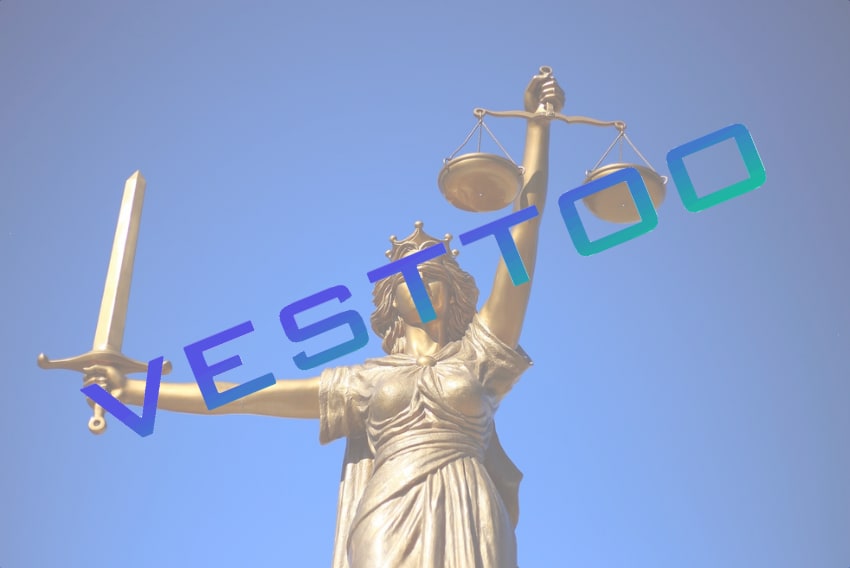Vesttoo case: JPL’s say arguments of Vesttoo & creditor committee “meritless”

In a response to objections made to the bankruptcy court by Vesttoo and the unsecured creditor committee, the joint provisional liquidators (JPL’s) to the affected cells of the Aon White Rock SAC vehicle have said arguments made objecting to their application for Chapter 15 relief are “meritless”.
The JPL’s, as appointed by the Bermuda Monetary Authority (BMA), continue to seek the courts approval to begin legal discovery to help them in understanding the status and effects of the Vesttoo letter of credit (LOC) fraud, on the specific segregated cells that have been impacted within broking giant Aon’s White Rock SAC vehicle in Bermuda.
The right to pursue legal discovery against the debtors, Vesttoo and its related entities, has been a key goal for the JPL’s, Aon and White Rock.
They see it as an essential step in the process, to allow them to identify what, if any, value remains in or linked to the segregated cells that had been used to house collateralized reinsurance deals Vesttoo had facilitated and where letters of credit (LOCs) were subsequently found to be fraudulent.
The legal back and forth continues, despite the judge calling this week for less litigation and more cooperation in the case.
It’s easy to understand why, as the JPL’s and Aon are seeking to protect the assets within the White Rock cells and pursue claims against the Vesttoo cells, for the benefit of the creditors to those cells, which are Aon’s clients.
The issue that is stalling legal proceedings is that those creditors aren’t the only ones feeling they have potential claims, the others being the so-called Official Committee of Unsecured Creditors in the Vesttoo Chapter 11 case.
Those creditors also have claims against Vesttoo related transactions and structures, but it’s not clear exactly where all of those cells or structures lie, as Vesttoo had worked on reinsurance transactions using a range of vehicles.
There may be some crossover between the creditors to the Aon White Rock Vesttoo cells and the creditor group, but if there is it isn’t being made particularly clear in the court filings.
All of which goes a long way towards explaining why ownership or control of the Vesttoo linked segregated cells has been a key concern of all parties, with the JPL’s seeking to protect them for the benefit of creditors and beneficiaries to those specific White Rock cells, while Vesttoo as debtors and the other creditors suggest any claims should be considered under the entire bankruptcy estate.
The JPL’s latest filing states, “The need for the JPLs to commence their discovery efforts is particularly acute because it is only the independent court appointed JPLs and not the Debtors (or their Committee), that have the right to pursue the Vesttoo Cells’ claims for the benefit of the Vesttoo Cells’ creditors, including for the approximately $137 million of premiums misappropriated by the Debtors. Yet the Objections seek to delay or preclude the JPLs’ ability to pursue such claims and fulfill their other fiduciary duties.”
The filing goes through the various objections to the Chapter 15 relief filing made by Vesttoo and the committee of creditors, saying that each is invalid, or are being used to obstruct and delay the process.
In the Chapter 11 court hearing earlier this week, the Judge had agreed the JPL’s could attend the upcoming September 29th Bermuda Supreme Court hearing, but had stated that they should not take any action that might violate the automatic stay.
The JPL’s filing cites the “risk of disappearing documents and other discovery materials” that could affect their ability to perform legal discovery in the case.
It also explains that, while Vesttoo has attempted to claim ownership of the affected segregated cells, this is “ephemeral” as the assets in the segregated accounts should be deemed owned by the segregated account company, in the JPL’s view.
Adding, “The shareholder’s beneficial interest in the account does not attach to any specific property or entitle the Debtors to any lien or distribution. Hence, the Debtors’ only beneficial interest in the Vesttoo Cells is as a shareholder. Consequently, the Cells and their assets are not the Debtors’ property.”
This disagreement over cell ownership rights, of any assets within or linked to them, is set to run and as there are creditors on both sides of this argument, it now seems, this could be a challenging disagreement for the courts to decide on.
Until it’s decided, it’s also hard to see much progress being made in Bermuda or the US, as any action taken against the cells by either side, or discovery started, is certain to be objected to unless a ruling is agreed on that applies in both hearings.
As we said at the start of this debacle, the most important thing is to protect what value is left for those that should have been beneficiaries of it, or have lost money through the fraud allegedly undertaken by former Vesttoo senior staff and the other parties that have been named.
Under the bankruptcy process, a debtors estate tends to pool all assets and “property”, which can then be split according to claims made by creditors and their priorities.
Which further explains why ownership of these segregated cells and their property has become such a critical feature of the court case, when you have two groups of creditors with seemingly different opinions as to how best to move forwards on this issue.
Read all of our coverage of the alleged fraudulent or forged letter-of-credit (LOC) collateral linked to Vesttoo deals.






